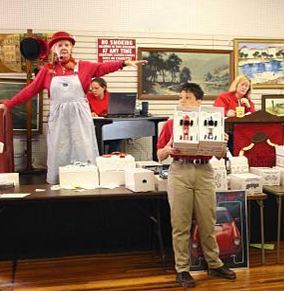The question post by ASQ for Certification Advice is interesting to me, but I must address this from multiple perspectives.
Many years ago, I have the opportunity to attend a presentation profiling the "Six Hats" advocated by De Bono. In that approach, an issue or situation should be approached from multiple perspectives. An individual can change their perspective by putting on a figurative "HAT" that reflects the details and objectives by which they must analyze and formulate a solution.
In keeping with this theme, I will summarize my Certification Advice from four distinct perspectives: SHILL, STALWART, SCHOLAR, and SAGE. Readers should be warned that in order to avoid being too clinical, I have applied doses of humor to help make this palatable for the curious readers.
SHILL
ASQ has Handbooks (I am particularly fond of the ASQ Six Sigma Green Belt Handbook which also has a corresponding ASQ Groups page at ASQ Green Belt Handbook page. Additional ASQ Links are provided including a link to very helpful advice by ASQ author, Govind Ramu, for Successful ASQ Certification Tips.
Plus If You Act Now (or at a time convenient to you), you can supplement this helpful content with practice exam questions, courses, and tutorials offered at your Local ASQ Section, by your ASQ Division at the next conference, or at a WCQI international quality conference.
Also, since many of the certifications draw from common elements of the Quality Body of Knowledge, having the capability to pass one exam will provide relevant preparation for similar or related certifications. Did you know that the BoK for the Certified Quality Engineer is 75-80% aligned with the Certified Six Sigma Black Belt and Certified Six Sigma Green Belt? Were you aware of the common elements linking the Certified Quality Improvement Associate, the Certified Quality Auditor, and the Certified Manager of Quality and Organizational Excellence? Why settle for one ASQ Certification, when you can get the "Family Pack".
There is no limit to the helpful resources that can all be yours ... if the price is right!!!
STALWART
In my past experience instructing at universities and colleges, one of the most frustrating encounters would come from a negligent student who, upon realizing that the exam or assignment was due, would suddenly request that I simply provide them with a summary or "brain-dump" of required material that could be replicated with short notice. I have no desire to offer this "quick fix" advice to those seeking ASQ Certifications.
Given that ASQ markets its certifications as a way to promote the profession and distinguish the "vital few" quality professionals from the trivial many inspectors, analysts, clerks, and testers who populate our ranks; it behooves the Fellows and Seniors within our ranks to cautiously guard our profession so that only worthy and deserving individual may advance and progress.
One attribute that may discourage the casual outsider is the requirement by ASQ to recertify for particular certifications every three years by either repeating the exam or demonstrating through professional activity their continued application and acceptance of Quality.
SCHOLAR
For Quality to persist and evolve, it must extend beyond tactics and techniques. The pursuit and study of particular practices, and the intellectual justification supporting those practices, has been the life's work of many eminent scientists and intellectuals. The Quality discipline combines objective operational studies with vocational subjective reviews of psychological patterns and preferences.
Certification in the Quality discipline is a subset of the knowledge that is required to be known. Since the four hour examination period can only probe for a fraction of the expected knowledge, the Quality professional needs to know substantially more than what would be required simply to pass an exam.
The key is to presume that for every item within the scope of examination, the effort to obtain complete understanding and appreciation of the subject material is tenfold.
SAGE
If we were to seek their counsel in this regard, I am certain that their advice would be summarized in one word, RESPECT.
Respect for the Profession - by always maintaining its integrity and intellectual rigor.
Respect for the Material - by always abiding by the ideals and aspirations of Quality.
Respect for the Student - by always pursuing worthy goals with disciplined and uncompromising efforts and dedication on a journey towards fulfillment and perfection.
When I first approached my certifications more than 15 years ago, I did so with urgency and passion. I had already been working in increasingly progressive roles and was at a point of significant personal responsibility for product release decisions, personnel management, and systems development.
ASQ Certifications should be reflective of the experience level of the participant and are not intended as an entry-point into the profession, but more appropriately as a tangible crystallization of knowledge, experience, and personal conviction. Only then will the initiatives success and deliver the promised expectations as purported by ASQ leadership in the multiple communications.










